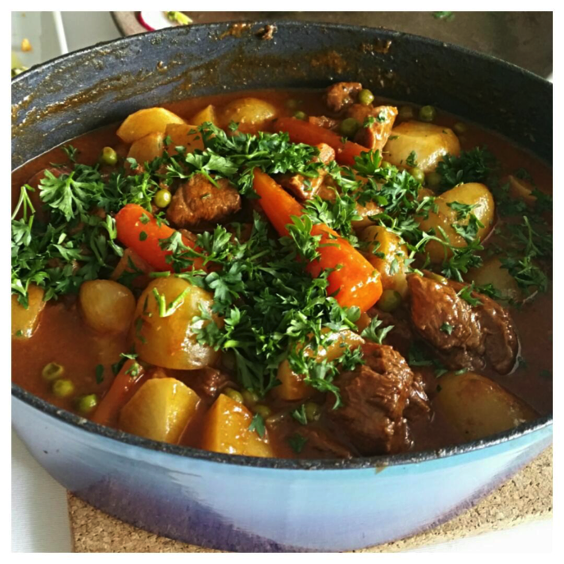The history of Navarin d’Agneau
At first glance, Navarin d’Agneau may seem like just another meat-and-veg stew – rustic, hearty and comforting. But this traditional French dish, gently simmered and bursting with the brightness of spring vegetables, is far more than that. It’s a celebration of the season itself – a dish with deep roots, a name steeped in legend, and a flavour that captures the turning of the year from cold to warm.
Navarin is a lamb stew, typically made with shoulder or neck of lamb cut into chunks, browned, and slowly cooked with onions, carrots, potatoes and turnips. What sets it apart from its winter cousins is its timing – and its ingredients. It’s traditionally served in early to mid-spring, when lamb is at its most tender and young vegetables are just beginning to arrive in the markets. It’s this use of navet – French for turnip – that likely gave the dish its name.
However, as with many classic dishes, culinary folklore offers a more colourful theory. Some believe Navarin may have been named in honour of the Battle of Navarino, a decisive 1827 naval engagement in which a combined British, French and Russian fleet defeated the Ottoman navy off the coast of Greece. The stew, then, would have been a patriotic gesture – a dish served to commemorate victory.
The lamb is typically cooked until tender in a light tomato-based broth – a 19th-century innovation that brought subtle acidity and a slight sweetness to the sauce. Towards the end of cooking, spring vegetables are added – fresh peas, baby carrots, new potatoes or pearl onions – which give the stew a softness and colour that lifts it out of winter. A well-made Navarin d’Agneau is gently fragrant, with a rich yet clean flavour and a broth that’s both comforting and refined.
Across France, especially in the Loire and Normandy regions, Navarin is a springtime standard – often served at Easter or for Sunday family lunches. It’s seen as a marker of the new season – a way to honour spring lamb and the first sweet vegetables from the earth.
In Cyprus, lamb is central to many celebratory meals, particularly around Orthodox Easter. While Navarin d’Agneau itself is not a traditional dish on the island, its flavours and ingredients are familiar: tender lamb, garlic, tomatoes and garden vegetables all feature prominently in local cooking. As Cypriot cooks embrace more international dishes, versions of Navarin – sometimes brightened with local herbs or finished with a squeeze of lemon – are finding a welcome place at the table.
More than a stew, Navarin d’Agneau is a celebration in a pot – a meal that captures the freshness of spring and the richness of tradition.







Click here to change your cookie preferences